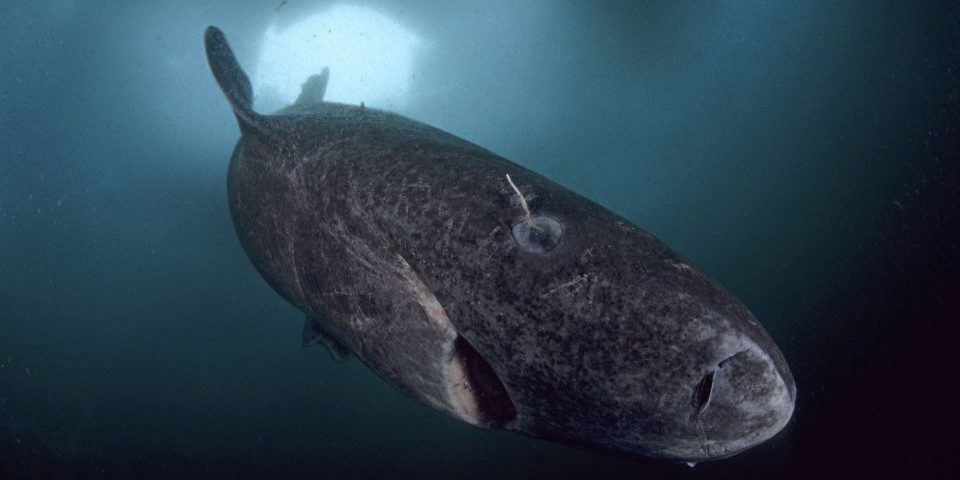An elusive creature of the deep can live for centuries. Scientists think they know why

NASA’s exciting 2024 began with a crash that ended a historic mission
December 28, 2024
Lady Gaga Details ‘LG7’: ‘Die With a Smile’ Is ‘Huge Part’ of New Album
December 28, 2024An elusive creature of the deep can live for centuries. Scientists think they know why
This week, learn why Greenland sharks can live for centuries, discover when Neanderthals and humans met, see the most volcanic world in our solar system, and…
Full Article
Editor’s note: A version of this story appeared in CNN’s Wonder Theory science newsletter. To get it in your inbox, sign up for free here.
“Even though you want to try to, never grow up,” Peter Pan said in the titular novel by J.M. Barrie, echoing a sentiment long expressed by the human race in an effort to cheat death.
The quest to unlock the secrets of longevity has been the topic of scientific study for decades. And some of the greatest lessons about living a long life come from nature itself.
Take Jonathan the giant tortoise, for instance. It is believed that the tortoise, a resident of the remote South Atlantic island of St. Helena, was likely born in 1832 — but he may be more than 200 years old since the exact date of his birth remains unknown.
Although blind and lacking a sense of smell, Jonathan still has sharp hearing for his advanced age and sunbathes during mild weather.
But even though giant tortoises are known for their exceptionally long lives, they may be outranked by an elusive creature of the deep.
The rarely seen Greenland shark is a sluggish creature, slowly swimming through the deep waters of the North Atlantic and Arctic oceans. The polar fish is the only species of shark that can withstand the freezing temperatures year-round.
The large sharks also live to be more than 400 years old, and some of them may have been alive since colonial times.
After mapping and studying their extraordinary genomes, scientists think the sharks’ unusually long lifespans are rooted in their unique genetic makeup — with insights that could be used to extend human lifespans.
The “Black Beauty” meteorite opened a window into studying ancient Mars when it was found in the Sahara Desert in 2011.
Astronomers believe the space rock was ejected from the Martian surface 5 million to 10 million years ago. And now, a single mineral grain inside the meteorite has revealed the oldest direct evidence of water on Mars 4.45 billion years ago.
The mineral grain was altered by hot water on Mars, which suggests that habitable environments such as hot springs may have existed on the red planet early in its history.
Meanwhile, the Perseverance rover just completed its 3 ½-month ascent up the steep rim of Jezero Crater on Mars, spotting an unusual zebra-striped rock along the way. Next up? The robotic explorer will investigate the oldest rocks on Mars to uncover more about the planet’s mysterious past.
With distinctive orange-and-black wings, monarch butterflies are easy to spot as they flit among the flowers, helping pollinate plants and encouraging biodiversity.
But monarch populations have seen a steep decline due to insecticides, habitat loss and the climate crisis — troubling enough that the US Fish and Wildlife Service has proposed adding the fragile species to the threatened species list.
If the butterflies receive the designation, more action could be taken to protect the important pollinators. But officials warn that without action, monarchs could vanish before the end of the century with far-reaching consequences for ecosystems.
When a creature washed ashore in New Zealand in July, experts wondered whether it might be a spade-toothed whale, the world’s rarest whale that’s considered to be almost mythical because it has never been seen alive at sea.
Now, scientists studying the remains have confirmed the “really stocky, powerful-looking little animal” is indeed one of the elusive marine mammals, said Anton van Helden, an expert on some of the world’s rarest whales.
The carcass, studied by whale scientists and members of the local Māori community, yielded precious clues about the deep-sea-diving animal.
Ancient DNA retrieved from bone fragments found in a cave beneath a medieval castle have helped scientists pinpoint when prehistoric humans encountered Neanderthals and made babies with them.
The bones belonged to a mother, daughter and distant cousins who lived in what’s now eastern Germany about 45,000 years ago. Their genomes revealed evidence of Neanderthal ancestry, meaning that early Homo sapiens living in the region mated with Neanderthals 1,500 years earlier.
“We were far more similar than we were different,” said Priya Moorjani, assistant professor of molecular and cell biology at the University of California, Berkeley.
“They seem to have mixed with each other for a long period of time.”
In addition to shedding light on the shared history between humans and Neanderthals, the study also showed that the fragments belonged to a lost branch of the human family tree.
Explore these fascinating new findings:
— A male humpback whale embarked on a record-breaking migration spanning 8,106 miles (13,046 kilometers) between the Pacific and Indian oceans, offering unique insight into the complex behaviors of these marine giants.
— A type of hardy bacteria, nicknamed “Conan the Bacterium,” is resistant to doses of radiation thousands of times stronger than what would kill a human. Now, scientists have figured out its “secret sauce,” which could be used to protect deep-space astronauts in the future.
— The NASA Juno spacecraft’s flybys of Jupiter’s fiery moon Io helped reveal the surprising reasons behind why it’s the most volcanic world in our solar system.
Like what you’ve read? Oh, but there’s more. Sign up here to receive in your inbox the next edition of Wonder Theory, brought to you by CNN Space and Science writers Ashley Strickland, Katie Hunt and Jackie Wattles. They find wonder in planets beyond our solar system and discoveries from the ancient world.
© 2024 Cable News Network. A Warner Bros. Discovery Company. All Rights Reserved. CNN Sans ™ & © 2016 Cable News Network.



